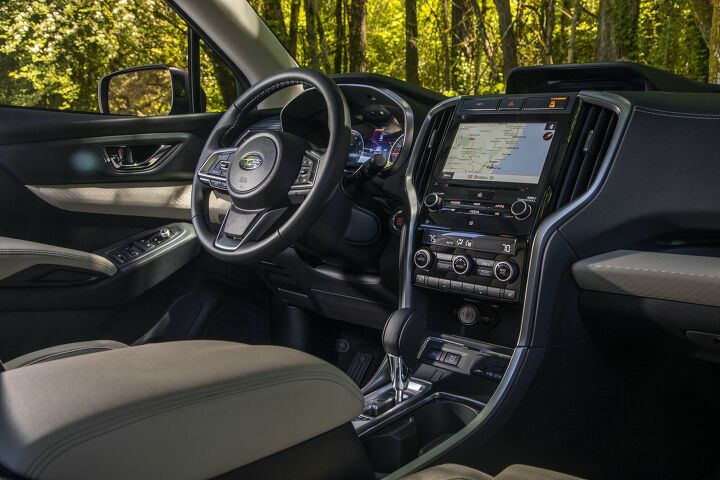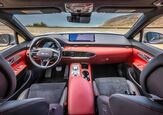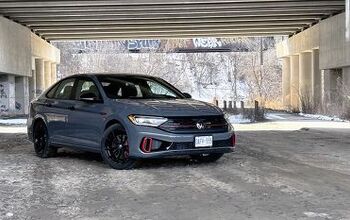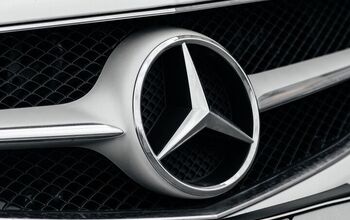Subaru Ascent Vs Subaru Outback: Which Crossover Is Right for You?
If you are in the market for a roomy crossover that offers all-weather capabilities with standard all-wheel-drive, the Subaru Ascent and Outback are both great options.
These vehicles compete in two different segments, but they come with similar powertrain features, similar interior features and similar interior space for the front- and second-row riders, so which one is right for you?
Get a Quote on a New Subaru Ascent or OutbackBelow, we take a look at the key features of each of these popular Subaru crossovers to help decide which better fits your needs.
Cabin Space
When you head inside these two Subaru crossovers, you find the most significant difference. The Outback offers two rows of seating while the larger Ascent offers three rows, allowing a properly configured Ascent to seat eight people while the Outback will only seat five. However, that does not mean that Ascent offers more seating space for all passengers.
Ascent: Compared to the Outback, the Ascent offers more headroom for the driver and front passenger. It manages 41.3 inches (1,049 mm) in the front while the Outback offers 40.1 inches (1,018 mm). It also offers 61.3 inches (1,557 mm) of front shoulder room against 58.1 inches (1,475 mm) in the Outback. It offers more hip room as well, 57.7 inches (1,465 mm) against 55.5 (1,409 mm), along with similar advantages in the second row offering both more head and shoulder room compared to its smaller sibling. Of course, the Ascent also has the advantage of the third row, offering to seat three more people.
Outback: The Outback, however, offers marginally more legroom in the front at 42.8 inches (1,087 mm) against 42.2 inches (1,071 mm). It is also slightly roomier in the back with 39.5 inches (1,013 mm) of legroom on offer compared to 38.6 inches (1,005mm) on the larger crossover.
Bottom Line: If you need to regularly transport more than five people, the Ascent is the easy choice, but if you don’t need the third row of seats, you need to figure out which interior dimensions are most important to you and your passengers. If you and your passengers have longer legs, the Outback is the better choice, but if you prefer more shoulder room with the capacity for eight, the Ascent is the better buy.
Cargo and Towing
The Ascent is the larger vehicle, so it is little surprise that it offers quite a bit more cargo space than the Outback. The larger of the two Subarus can also tow more.
Ascent: In terms of total cargo space, the Ascent offers 86.5 cu-ft (2,449 liters). That number includes the total space in which you can pack cargo behind the front seats with the second-row seats folded down. With the third-row folded, it offers 47.5cu-ft (1,345 liters) of cargo space. However, with all three rows up, it only has 17.8cu-ft (504 liters) of cargo space. Besides offering impressive cargo space, the Ascent will also tow 5,000 lb, which is a pretty big number for a vehicle of its class.
Outback: With the second-row seats folded down to free up the most cargo space, the Subaru Outback offers 75.7 cu-ft ( 2,143 liters) . If you need the back seats for passengers, the rear cargo area still offers 32.5 cu-ft (920 liters). Both of these numbers are solid, but they are well below that of the Ascent.
As for pulling a trailer, a properly configured Subaru Outback will tow up to 3,500 lb.
Bottom Line: If you want the most cargo space and the highest towing capacity, the Ascent is the easy choice.
Technology and Features
Ascent: The base model Ascent also comes with cloth, manually adjusted seats and, like the Outback, you get power adjusted and heated cloth seats in Premium trim. Step up to the Limited or Touring and you get power adjusted, heated leather seats, a heated steering wheel, and heated second-row seats while Touring models also have ventilated front seats.
One area where the Ascent offers something else that the Outback does not is in the second row of seating. You can order the Ascent in Premium, Limited and Touring trim with second-row captain’s chairs. These reduce the seating capacity by one, but they are definitely more comfortable than the standard split-bench seat. They also make for easier access to the third row, which is a reclining 60/40-split design in all models.
A leather-wrapped steering wheel is standard on Premium, Limited, and Touring models, while being heated in Limited and Touring trim. The infotainment system in the base model Subaru Ascent is a 6.5-inch unit with six speakers. Premium and Limited models get an 8-inch screen that comes with optional navigation. The Premium and Limited models come standard with the same six-speaker system as the base Ascent, but Limited buyers can opt for the 14-speaker Harman Kardon system. That Harman system is standard in the Ascent Touring, as is the 8-inch screen with navigation.
SEE ALSO: Toyota Highlander vs Subaru Ascent: Which Crossover is Right for You?The Ascent has many standard interior features that are included with every trim line. This includes a three-spoke steering wheel with infotainment controls, dual front and rear USB ports (Touring models have two more for the third row), a power rear gate with automatic close, three-zone climate control with air vents for all three rows, EyeSight Driver Assist Technology, High Beam Assist, daytime running lights, keyless entry, power windows, power locks, a rear-view camera system and an array of airbags.
Outback: The base model Outback comes with manually-adjusted cloth seats while the Premium trim level adds power adjustment and heated surfaces to the cloth front seats. The Outback Limited features power-adjusted, heated leather seats up front, and in the Touring models, the power-adjusted seats are wrapped in Nappa leather, with the front seats being both heated and cooled.
A 60/40-split second-row seat is standard on all Outback models, with cloth coverings on base and Premium models while the Limited and Touring second row is wrapped in trim-specific leather with heated outboard seats.
A leather-wrapped steering wheel and shift handle are standard on Premium, Limited and Touring models. A heated steering wheel is optional in Limited models and standard with the Touring.
SEE ALSO: Toyota RAV4 vs Subaru Forester: Which Crossover Is Right For You?The Subaru Outback base model comes standard with the unique dual 7.0-inch Starlink multimedia system with four speakers. Those who opt for the Premium or Limited models get a standard 11.6-inch touchscreen with optional navigation and in the Touring models, that big screen and navigation are both standard. Outback Premium comes with a 6-speaker sound system while the Limited and Touring models come with the premium Harman Kardon 12-speaker system.
The Outback has a long list of standard interior features that are included with every trim line. This includes Advanced Adaptive Cruise Control, a three-spoke steering wheel with infotainment controls, dual front USB ports, automatic climate control (dual-zone on Premium, Limited, and Touring), EyeSight Driver Assist Technology, High Beam Assist, daytime running lights, keyless entry, power windows, power locks, a rear-view camera system and a spread of airbags.
Bottom Line: The Ascent has more space, but the Outback has more standard and available interior tech features. The Outback has a more impressive base infotainment system, a more impressive premium infotainment system and higher quality premium leather upholstery.
Powertrain
Ascent: The Subaru Ascent is only offered with one engine – a turbocharged 2.4-liter Boxer four-cylinder that delivers 260 horsepower and 277 lb-ft of torque. This engine option only comes mated to Subaru’s Lineartronic 8-Speed Continuously Variable Electronically Controlled Manually Interactive Automatic Transmission with Overdrive. In short, it has a continuously variable transmission – or CVT – with programming that allows it to feel more like a manually-shifted automatic when the driver wants a more connected feel. Of course, the Subaru Symmetrical All-Wheel Drive system is standard.
Outback: The Subaru Outback lineup offers two engine options, one of which is the same turbocharged mill from the Ascent. The base engine in the Outback non-XT models is a naturally aspirated 2.5- liter four-cylinder Boxer engine that delivers 182 horsepower and 176 lb-ft of torque. If you want more power from your Outback, you will want to consider any of the XT trim levels, all of which come with the turbocharged 2.4 liter engine with 260 horsepower and 277 lb-ft of torque. Like the Ascent, all Outback engines, regardless of the engine, are equipped with the Symmetrical All-Wheel Drive system and the Lineartronic 8-Speed Continuously Variable Electronically Controlled Manually Interactive Automatic Transmission with Overdrive.
Bottom Line: If you really aren’t interested in paying for more power, the Outback has the clear advantage. If you want more power, both of these vehicles offer the same turbocharged engine with standard all-wheel-drive and the same CVT, but the Outback has a key advantage in terms of performance. It weighs about 800 pounds less than the Ascent, so that 260-horsepower output makes the Outback the more exciting driver’s vehicle of the two.
Fuel Economy
Outback: If fuel economy is one of your key criteria in picking between these two Subaru crossovers, the Outback has a clear advantage. The base 2.5-liter engine offers 26 mpg around town and 33 mpg on the highway while the turbocharged 2.4-liter Boxer mill sports an EPA rating in the Outback of 23 mpg around town and 30 mpg on the open road.
Ascent: Although the Subaru Ascent is only offered with a single powertrain configuration with the turbocharged engine, the CVT and all-wheel-drive, the fuel economy varies by trim level. The Ascent in base and Premium trim offers 21 mpg around town and 27 mpg on the open road. The Ascent Limited and Touring both have official fuel economy ratings of 20 mpg in the city and 26 mpg on the highway.
Bottom Line: No matter which trim levels you compare, the Outback has the fuel economy advantage, so if you are focusing on miles-per-gallon, the smaller of these two Subaru crossovers is the better choice.
Safety
The Subaru brand is known for offering a collection of the safest vehicles on the road, so it should come as little surprise that both the Ascent and Outback come with a long list of standard and optional safety features.
Ascent: Standard active safety features in the Subaru Ascent include all-wheel-drive, a four-wheel anti-lock braking system, High Beam Assist, Vehicle Dynamics Control, Brake Assist with Override, a Tire Pressure Monitoring System, Daytime Running lights, and a Rear-Vision Camera. Optional active-safety features in the Ascent include Blind-Spot Detection with Lane Change Assist and Rear Cross-Traffic Alert, Reverse Automatic Braking, and a 180-degree front-view monitor.
All Ascent models also come standard with the EyeSight Driver Assist Technology Suite, which includes Pre-collision Braking System, Pre-Collision Throttle Management, Lane Departure, and Sway Warning, Advanced Adaptive Cruise Control with Lane Centering.
SEE ALSO: Subaru Crosstrek vs Mazda CX-30 ComparisonAlso, all models aside from the base Ascent come with the STARLINK Safety and Security package, which includes Automatic Collision Notification, SOS Emergency Assistance, Enhanced Roadside Assistance, Maintenance Notifications, Monthly Vehicle Health Report, Diagnostic Alerts, Remote Engine Start with climate control, Remote Lock/Unlock and Concierge services.
Outback: Standard active safety features in the Outback include Subaru Symmetrical All-Wheel Drive, a four-wheel anti-lock braking system, Brake Assist with Override, High Beam Assist, Vehicle Dynamics Control, Traction Control System, the Tire Pressure Monitoring System, LED Daytime Running Lights and a Rear-Vision Camera system. Optional active-safety features in the Outback include the DriverFocus Distraction Mitigation System, Blind-Spot Detection with Lane Change Assist and Rear Cross-Traffic Alert, Reverse Automatic Braking, and a 180-Degree Front-View Monitor.
The Outback also comes with the EyeSight Driver Assist Technology Suite, which includes Advanced Adaptive Cruise Control with Lane Centering, Pre-collision Braking, Lane Departure and Sway Warning, and Lane Keep Assist.
In every Subaru Outback other than the base trim level, the STARLINK Safety and Security system are standard. This includes automatic Collision Notification, SOS Emergency Assistance, Enhanced Roadside Assistance, Maintenance Notifications, Monthly Vehicle Health Report, Diagnostic Alerts, Remote Engine Start with climate control, Remote Lock/Unlock, and Concierge services.
Bottom Line: The Outback has more standard active and passive safety features and more optional active and passive safety features, including more driver-assisting technology and more airbags. While both vehicles boast five-star safety scores, the Outback offers more safety features.
Styling
Each of these Subaru vehicles shares a familial styling design, so they look very similar. They both have similarly shaped headlights, grilles and cooling openings along the bottom of the front fascia. They both have contrasting cladding running along the bottom edge of the body, including up around the wheel openings, and they have a similarly shaped greenhouse and side windows.
Ascent: The Ascent is wider, taller, and longer, including between the wheels, so it is larger in every dimension. That creates a bigger-looking vehicle, even though the styling features are similar to the Outback, making the Ascent feel more like an SUV than a crossover.
Outback: Since the Outback is a bit smaller, it has a sportier look and a stance more like that of a car than a crossover or SUV. Back in the day, this would have been called a station wagon, but automakers have gotten away from that wording. However, for someone who wants a roomy vehicle that is styled more like a car than an SUV, the Outback is a great option.
Bottom Line: The odds are good that if you like the styling language of the modern Subaru lineup, you will find the Outback and the Ascent similarly attractive. The Ascent looks like a bigger, beefier look that will appeal to those drivers who want more of an SUV look while the Outback has the form of a station wagon.
Pricing
Ascent: The Subaru Ascent is larger and comes with the standard turbocharged engine, so it has a slightly higher starting price of $33,345. The Premium model starts at $35,845, the Limited begins at $40,645 and the top-of-the-line Ascent Touring costs $46,495.
Outback: The Subaru Outback has the pricing advantage, starting at $27,845 If you want more content than what is offered in base form, the Premium models begin at $30,095, Limited models begin at $34,645 and the Outback Touring starts at $38,545, all of which come with the naturally aspirated engine. If you want turbocharged power, the Outback Onyx Edition XT starts at $36,195, the Limited XT starts at $39,045 and the range-topping Touring XT has a price of $40,995.
Bottom Line: The Outback costs less at every level of a trim-to-trim basis, so if your key concern is the purchase price, that is the easy pick.
Verdict: Subaru Ascent vs Subaru Outback
The first question to ask yourself when deciding between the Subaru Outback and Ascent is whether or not you really need a third-row of seats. If you need to seat more than five people, the Ascent is the easy choice. If you don’t need the extra seating, the Ascent is a hard sell. The Outback offers better performance, better fuel economy, more interior technology, and greater off-road capabilities, all while costing less across every trim level.
Become an AutoGuide insider. Get the latest from the automotive world first by subscribing to our newsletter here.
Patrick Rall has been covering the automotive industry for over a decade, but was born into car culture. Having grown up in his father's performance shop, he spent extensive time at the track, driving and wrenching on various types of vehicles.
More by Patrick Rall












































Comments
Join the conversation